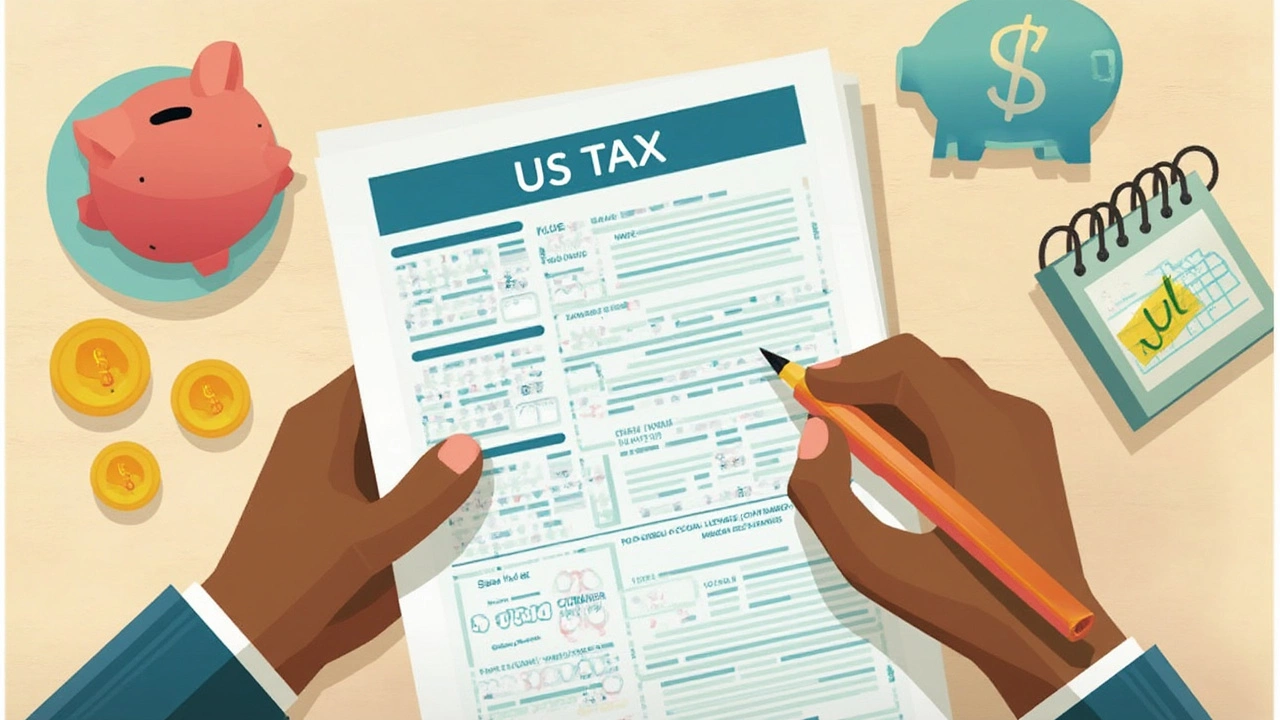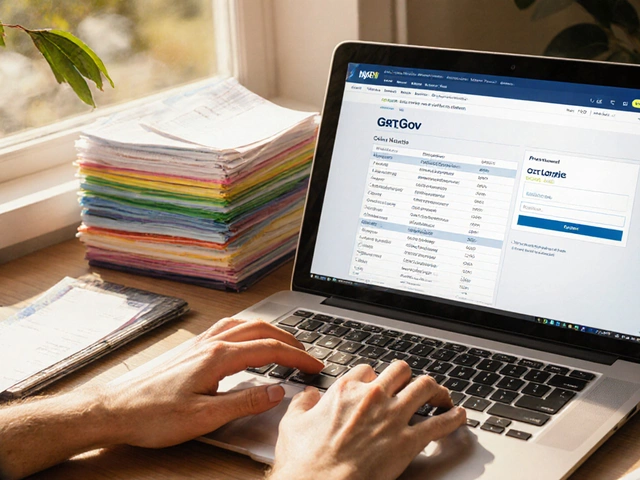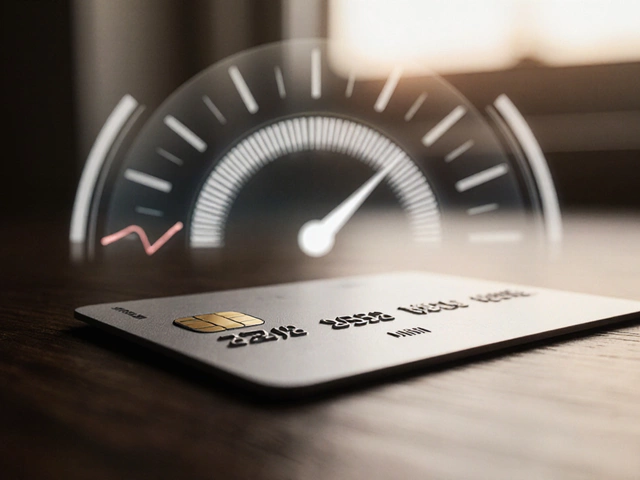
Ever wonder why your friend shows off a $7000 tax refund check while yours is more 'meh'? It’s not magic, it’s all about the credits and deductions that stack up during tax season. The secret? Knowing which credits to claim, how to track your income, and making sure you’re not leaving money on the table.
The Earned Income Tax Credit, or EITC, is one of the biggies—some families with kids and lower income can walk away with thousands just from this credit alone. Then come other credits, like the Child Tax Credit or even deductions for stuff you might not realize counts—think student loan interest or certain work expenses.
The IRS isn’t hiding piles of cash, but you do need to check every detail if you want a shot at a number like $7000. Most people shortchange themselves by missing credits or forgetting deductions. I once thought I was getting everything until my parrot Kiwi started repeating, 'Double-check! Double-check!' Turns out, he was right. It paid for his fancy organic bird treats for months.
- Why Do Some People Get Huge Tax Refunds?
- The Credits and Deductions that Boost Refunds
- What You Need to Qualify for a $7000 Refund
- Big Mistakes to Avoid (Seriously!)
- Get Every Dollar: Pro Tips for Maximizing Your Refund
Why Do Some People Get Huge Tax Refunds?
You’ll see people all over social media talking about a crazy big refund—and it’s usually not by accident. The main reason for those eye-popping numbers is that folks qualify for a bunch of tax credits and have more taxes withheld during the year than they actually owe. When the IRS catches that extra withholding or applies those credits, it cuts a big check back.
The tax refund magic often comes from a few sources stacked together:
- Earned Income Tax Credit (EITC): For the 2024 tax year, this credit can be worth up to $7,830 for a family with three or more kids. Even workers with no kids may get something, but families score big.
- Child Tax Credit (CTC): This can add up to $2,000 per child (up to a limit). For some, that’s an instant boost.
- Over-withholding: Many people have extra taxes pulled from each paycheck, usually because they claim fewer allowances on their W-4. All that money comes back as a refund if it’s not owed.
- Deductions: Things like student loan interest, mortgage interest, state taxes paid, or retirement contributions. Each one chips away at your taxable income.
Check out how credits can add up for a family of four filing as head of household:
| Source | Amount Refunded |
|---|---|
| Earned Income Tax Credit | $6,955 |
| Child Tax Credit (2 kids) | $4,000 |
| Over-withholding | $1,200 |
| Total Potential Refund | $12,155 |
So yeah, that’s how it happens. Most people don’t realize just how much these credits and withholdings can boost their refund past $7000.
But remember, if you owe back taxes, student loans, or child support, some or all of your refund can get taken to pay those off. The IRS is quick with the offset button.
The Credits and Deductions that Boost Refunds
Here’s where the big tax refund numbers come from: credits and deductions. These are the heavy hitters that can send your refund through the roof—not just a couple hundred bucks, but maybe thousands. You don’t need a PhD in tax law, but you do need to know the most powerful credits and how they work.
- Earned Income Tax Credit (EITC): If your income is on the lower side and you’ve got kids, this is a game-changer. For 2024, the EITC maxes out at $7,830 for families with three or more kids. Even single folks without children can get a smaller slice of the pie—up to $632. Fun fact: Every year, millions leave EITC money unclaimed because they don’t file or think they won’t qualify.
- Child Tax Credit (CTC): For 2024, this credit is $2,000 per qualifying child. If your income is under $200,000 (or $400,000 for couples), you’re in the sweet spot. If the credit knocks your tax bill below zero, you can still get up to $1,600 back per child as a refund.
- American Opportunity Credit: Got kids in college? You can get up to $2,500 per year for tuition and school expenses (first four years only). If you qualify, 40% of that credit is refundable, so it adds cash to your refund instead of just lowering your tax.
- Other Deductions: Don’t skip stuff like student loan interest (up to $2,500 a year), educator expenses (teachers can write off $300), or IRA contributions. Every dollar counted here can lower your taxable income, making a bigger refund possible.
According to the IRS: “About 20% of eligible taxpayers miss out on the EITC every year.”
You can see why knowing about each credit and deduction matters. Check out this quick table on their 2024 max values to get a sense of how these numbers stack up:
| Credit/Deduction | Max Value (2024) | Who Qualifies? |
|---|---|---|
| Earned Income Tax Credit | $7,830 | Lower-income, 3+ kids |
| Child Tax Credit | $2,000/child ($1,600 refundable) | Kids under 17, income under $200-$400k |
| American Opportunity Credit | $2,500/student | College students (first four years) |
| Student Loan Interest Deduction | $2,500 | Borrowers with income under $85k ($175k joint) |
Want a tax refund over $7,000? You really need to stack credits like EITC and CTC. Don’t leave anything unclaimed—sometimes even small credits or deductions can push you into that magical refund range. That’s why I always say: double-check, ask questions, and don’t just trust those basic online tax calculators to catch every dollar.

What You Need to Qualify for a 00 Refund
If $7000 sounds like a dream tax refund, the truth is, it happens—just not by luck. Here’s how real people pull it off with the right credits, timing, and paperwork.
The biggest factor is usually family status and income. For example, if you’re a working parent, especially with two or more kids, your odds go way up. The Earned Income Tax Credit (EITC) is a heavy hitter. In 2024, it could mean up to $7,430 for families with three or more kids, if every rule checks out. Stack that with the Child Tax Credit, where each kid under 17 can add up to $2,000 more, and it starts adding up fast.
- Filing Status: Single parents or couples filing jointly can both qualify. Head of household often gets more benefits.
- Income Range: EITC caps out at about $63,398 for married couples with three kids (2024 numbers), but the sweet spot is much lower.
- Dependents: More qualifying kids equals a bigger refund. Kids have to live with you more than half the year and have legit Social Security numbers.
- Other Credits: Don’t skip the Child Tax Credit and, if you spent money on care for your kids to work, the Child and Dependent Care Credit. Each piece adds up.
If you paid a lot in federal taxes through paycheck withholdings or got hit by life changes like a layoff or pandemic stimulus, you might see a bigger refund too.
Check out some real numbers to see how fast these credits stack up:
| Credit | Max Amount (2024) | Who Qualifies? |
|---|---|---|
| Earned Income Tax Credit (EITC) | $7,430 | Families with 3+ kids, low-to-moderate income |
| Child Tax Credit | $2,000 per kid | Parents, income up to $200,000 ($400K MFJ) |
| Child & Dependent Care Credit | Up to $2,100 | Parents who pay for childcare so they can work |
Bottom line: stacking credits is how people hit a $7000 refund. The key is checking every box you’re eligible for and updating your info if your family or job changed last year. Some folks use tax software, others hit up local tax sites or free clinics to make sure nothing slips through.
Big Mistakes to Avoid (Seriously!)
Landing a tax refund that hits $7000 is great, but plenty of people end up blowing their shot because of some really avoidable slip-ups. Let’s clear these up now so you don't join the club of missed opportunities.
- Forgetting Key Credits and Deductions: The IRS says about 20% of taxpayers who are eligible for the Earned Income Tax Credit (EITC) don’t claim it. That’s thousands literally left on the table.
- Typos and Wrong Info: One wrong Social Security number or a mistyped bank routing number can delay your refund for weeks. Double-check all your details before you hit submit. Even my parrot could catch missing digits at this point.
- Not Filing Early: The IRS tends to process early filers faster, and the earlier your info matches up, the lower your chance of refund delays—especially if ID theft rears its head.
- Not Reporting Side Hustle Income: Leaving out gig work or extra cash made on apps like DoorDash or Etsy is a red flag for the IRS. That $1000 you forgot could trigger a full review or cost you in penalties.
- Overlooking Past Returns: If you missed credits in the last couple of years, you might still be able to go back (usually up to 3 years) and file an amended return. That old mistake can be cash in your pocket now.
Check out this comparison. It’s real data from the IRS (2023 stats) showing average refunds by filing type:
| Filing Status | Average Refund |
|---|---|
| Single | $1,427 |
| Head of Household | $2,738 |
| Married Filing Jointly | $3,951 |
| With Major Credits (EITC + Child Tax) | Up to $7,000 |
Don’t just take it from me. The IRS website says:
"Thoroughly check for every possible credit or deduction before submitting your return—it can make all the difference."If they’re urging folks to slow down and double-check, you know it matters.
Last pro tip: use the digital IRS ‘Where’s My Refund?’ tracker to stay in the loop after you file. It’s updated super often and gives you peace of mind while waiting for payday.

Get Every Dollar: Pro Tips for Maximizing Your Refund
If you want to see a refund that makes your jaw drop, you’ve got to play smart. Getting the biggest refund isn’t about hoping—the IRS works on the details you send, so let’s get those right. Here’s how you make sure you’re getting every cent you’ve earned.
- Check All the Credits You May Qualify For. The Earned Income Tax Credit (EITC) alone was worth up to $7,430 for families with three or more kids in 2024. Don’t forget about the Child Tax Credit (up to $2,000 for each child), the American Opportunity Tax Credit for students, or the Saver’s Credit if you contributed to your IRA or 401(k).
- Don’t Miss Deductions. If you paid student loan interest, have medical expenses over a certain percentage of your income, bought a home, or had big state and local taxes, those can cut your taxable income and boost your refund.
- Report Everything Accurately. Mistakes result in delays or money left on the table. Double-check Social Security numbers, spellings, and all figures you enter. The IRS computers compare what they get from you and your employer to what was reported. Mismatches mean headaches.
- File Early and Electronically. Electronic filers typically get their refund weeks faster. Plus, you can track it online rather than wait in the dark, wondering if your $7000 is crawling through a paper maze.
- Consider Professional Help. If your life is complicated—think side gigs, investments, multiple W-2s—it might be worth a pro tax preparer’s fee. They spot things you’d never think of and can keep your return audit-proof.
Just to give you an idea what these credits can add up to, here’s a quick table showing how major credits stacked up last filing season:
| Tax Credit | Max Value (2024) | Who Gets It? |
|---|---|---|
| Earned Income Tax Credit | $7,430 | Low/moderate income, with kids |
| Child Tax Credit | $2,000 per child | Families with under-17 children |
| American Opportunity Credit | $2,500 | College students (first 4 years) |
| Saver’s Credit | $1,000 ($2,000 if filing jointly) | Those making certain retirement contributions |
One last tip: Don’t be afraid to use software with smart interviews or even free IRS tools if your return is simple. The IRS Free File program is open to people with an AGI under $79,000—you don’t have to pay for fancy software just to claim your credits.
Getting a fat tax refund is totally possible, but you’ve gotta put in the effort to check every box. Think like a tax pro, but don’t be afraid to ask for help if you need it. Kiwi the parrot’s advice? Squawk until you get every last dollar they owe you!








Write a comment